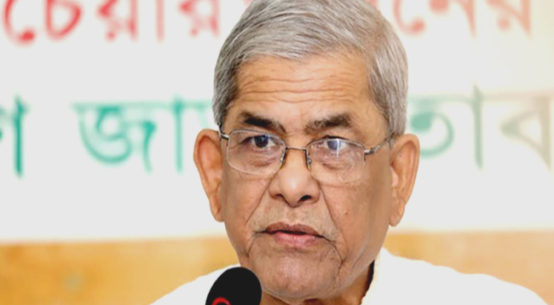Bangladesh Rice Research Institute (BRRI) has prepared a strategic plan for surplus production, synchronising with the government’s Vision 2041 alongside the predicted domestic consumption volume in the next two decades.
BRRI officials said Bangladesh was currently world’s fourth largest rice producer and consumer as well, meaning it was no more dependent on imports as far as the staple was concerned.
“The strategic plan is designed to produce surplus rice by 2041 also to achieve the SDG-2 goal,” BRRI Director General Dr Shahjahan Kabir told BSS.
He said their plan was based on a study, targeting to boost the production of boro and aman – the two major seasonal rice verities.
Kabir said they developed the plan keeping in mind that the country’s arable land was diminishing by one percent every year while the climate change also posed a threat to agriculture sector.
According to the latest statistics the country now produces some 3.60 crore tonnes of rice while the BRRI target is to increase the volume to 5.41 crore tonnes in 2040 and 6.09 in 2050 under the plan, mainly developing high yielding sub-verities of aman and boro.
The 2020 official statistics suggested that Bangladesh’s population size was 164.7 million while demographic experts said the population was increasing by two million newborns every year, meaning the population size would stand at 210 million in next three decades.
Kabir led the study titled “Doubling Rice Productivity in Bangladesh: A Way to Achieving SDG-2 and Moving Forward, while BRRI developed the strategic plan on the basis of the research findings.
“We are implementing short, medium and long term plans by adopting genetic gain raising at the rate of 44 kg in per hectare every year, reducing yield gap by 1 percent through agro-ecological management and rapid extension of new varieties,” he said.
BRRI’s liaison officer and study team member Abdul Momin, an agro-scientist as well, supplemented Kabir saying the plan envisaged to turn fellow lands into arable ones particularly in south-western region promoting production of traditional aus paddy using the abundant river waters.
“There are many farmlands in Bangladesh where rice production can be increased by around 21 percent,” he said.
The BRRI chief said according to fellow agriculture scientists even if 75 percent of the plan was executed Bangladesh could produce surplus rice for food reserve, exports and even for fish feeding.
He said under the plan, the country will able to produce surplus 42 lakh tonne rice by 2030, some 53 lakh tonnes by 2040 and 65 lakh tonnes by 2050.
Bangladesh was once dependent on imported rice despite lower population size but the country now became self-sufficient with domestic production, thanks to the invention of new high yielding verities (HYV) and mechanisation of crop production.
Agriculture experts and nutritionists, however, said over the past several years peoples food habit was also significantly changed reducing dependence on rice with increased fish, meat, eggs and vegetables production and consumption.

